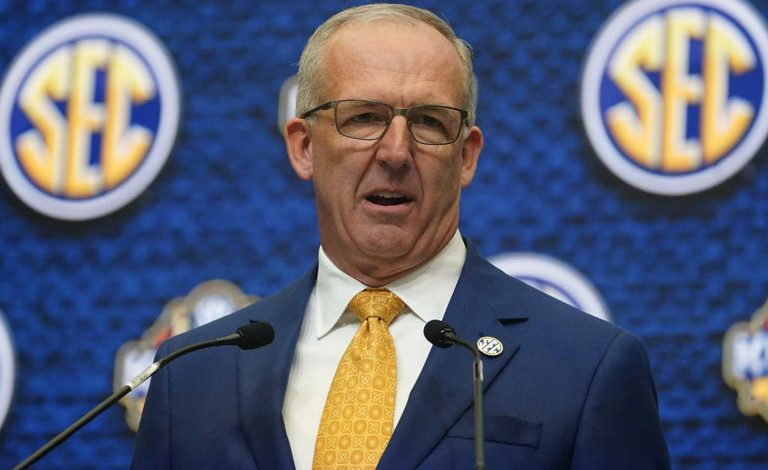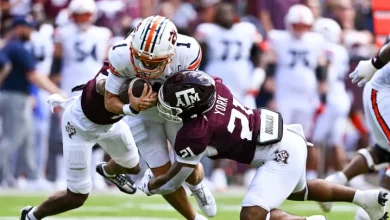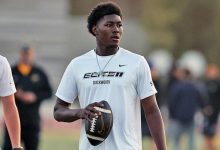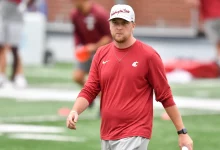SEC Commissioner Greg Sankey Addresses Future of College Football, NCAA Challenges, and Critiques His Own League.

In a rapidly evolving college athletics landscape, few voices carry as much weight as that of Southeastern Conference (SEC) Commissioner Greg Sankey. Known for his deliberate tone, measured responses, and forward-thinking leadership, Sankey has often been at the forefront of change in college sports. During a recent appearance before media and university officials, Sankey did something relatively rare — he pulled back the curtain on his concerns, hopes, and criticisms surrounding the state of college football, the NCAA, and even his own conference.
His comments weren’t just a routine address. They were a signal: The system is changing — and not all of it for the better. In an era dominated by NIL (Name, Image, and Likeness), conference realignment, lawsuits, athlete empowerment, and weakening centralized governance, Sankey provided a sobering but insightful view of where college football is and where it might go.
A Pivotal Moment in College Football
Sankey began by acknowledging what many in college athletics already feel: college football is at a tipping point.
“We are in a moment of transformation, and if we’re not honest about that, we’re not going to be ready for what’s next,” Sankey said. “College football is not immune to the forces that have changed everything else in sports and society. We must evolve, but we must also be deliberate in how we do that.”
He pointed to several key pressures shaping the current landscape:
- The explosion of NIL deals and the lack of consistent federal or NCAA regulation.
- The ongoing threat of lawsuits from athletes seeking employee status or revenue sharing.
- The blurred lines between amateurism and professionalism.
- Conference expansion and realignment creating logistical and cultural tensions.
- Fan disillusionment with long-standing traditions being upended.
“This isn’t about resisting change,” Sankey said. “It’s about managing change responsibly. We have to protect what’s special about college sports while modernizing it in a way that works for all stakeholders — athletes, fans, schools, and the broader public.”
The NCAA’s Role — and Its Shortcomings
Sankey didn’t mince words when discussing the NCAA’s diminishing influence. Once the clear governing body of college athletics, the NCAA has lost its grip, particularly in football. Sankey suggested that the NCAA, while still a stakeholder, no longer has the authority — or credibility — to guide college football’s next era.
“I don’t think the NCAA, as currently structured, is capable of managing the future of major college football,” Sankey said. “That doesn’t mean it has no role. But for too long, we’ve seen indecision, reactive policies, and a failure to anticipate where things are going.”
He highlighted how recent judicial losses and public criticism have rendered the NCAA vulnerable. Instead of leading on NIL, the NCAA resisted. Instead of adapting governance models, it clung to outdated structures.
“We can’t wait anymore,” he said. “The NCAA needs to evolve, or we’re going to have to create something that functions better — particularly for college football.”
This echoes growing sentiment among college athletics leaders that Division I football, especially the Power Five or “Power Four,” may one day break away from NCAA oversight entirely.
College Football’s Governance Vacuum
One of Sankey’s central concerns was the lack of a unified, forward-thinking governing body for college football. While the College Football Playoff (CFP) board manages the postseason, no single entity effectively governs regular season structure, athlete compensation, or competitive balance.
“Right now, we have multiple entities pulling in different directions,” Sankey explained. “There’s the CFP, the NCAA, individual conferences, state laws, and now the federal government — all trying to influence college football. That’s not sustainable.”
Sankey called for serious discussion around creating a centralized college football governing authority — possibly led by conference commissioners and independent experts — that would oversee eligibility, NIL policy, playoff structure, and realignment rules.
“Until we address the lack of centralized governance, we’re going to keep lurching from crisis to crisis,” he warned.
Sankey on NIL: A ‘Wild West’ in Need of Structure
While Sankey supports athletes benefiting from their name, image, and likeness, he’s deeply concerned about the lack of transparency and structure surrounding NIL. He referred to the current state of NIL as “unsustainable chaos” and warned that without federal intervention or a new regulatory framework, college football risks becoming “professional sports in everything but name.”
“NIL was supposed to empower athletes, and in many ways, it has. But without regulation, it’s becoming a tool for pay-for-play and recruiting inducements,” he said. “That’s not what NIL was meant to be. And schools, especially those who play by the rules, are suffering because of the lack of enforcement.”
Sankey is a strong proponent of national NIL legislation that would set consistent standards across all 50 states. Until then, he says, there will be winners and losers based not just on football ability, but on who can game the system best.
Taking Aim at the SEC: “We’re Not Perfect”
In a moment of unusual candor, Sankey turned the spotlight inward. He acknowledged that the SEC, despite its dominance in recent years, has contributed to some of the chaos in college football — especially with aggressive expansion and media-driven decisions.
“When we made the decision to expand, we knew it would have ripple effects,” Sankey said, referring to the additions of Texas and Oklahoma. “But I think we’ve underestimated the unintended consequences of those moves — on rivalries, travel, and the identity of college football itself.”
He also questioned whether the conference had done enough to maintain competitive balance, both within the SEC and nationally. “It’s not healthy for the sport when only a handful of programs dominate every year,” he said. “We need to find ways to keep competition broad and meaningful, from the top to the bottom of the league.”
His remarks show an awareness that even the nation’s most powerful conference cannot operate in a vacuum. If college football becomes too top-heavy or loses its regional identity, the entire ecosystem suffers.
Realignment Fatigue and Fan Disconnect
Sankey acknowledged another growing issue: realignment fatigue and the disconnect fans feel as traditional rivalries disappear or become irregular. Games that once defined regional cultures — like Bedlam (Oklahoma vs. Oklahoma State) or the Pacific Coast rivalries of the old Pac-12 — are vanishing in the chase for media rights and playoff positioning.
“We have to remember who we serve,” Sankey said. “Fans want traditions. They want rivalries. They want games that matter — not just for TV but for the soul of college football.”
He emphasized that future realignment decisions — whether inside the SEC or across the sport — should prioritize continuity, travel feasibility, and fan engagement, not just television revenue.
A Call for Cooperation Among Conferences
Perhaps Sankey’s most important message was this: despite fierce competition, college football’s future depends on cooperation.
“We can’t keep operating as 10 or 12 isolated leagues fighting for their own slice of the pie,” he said. “If we want a postseason that’s fair, a recruiting landscape that’s stable, and a game that’s healthy 10 years from now, we need to start working together — not just within conferences, but across the entire sport.”
He called on Big Ten, ACC, and Big 12 leaders to join the SEC in creating unified standards and engaging policymakers in Washington to bring clarity to NIL, transfer rules, and athlete welfare policies.
What’s Next?
Sankey’s address wasn’t just a state-of-the-union speech. It was a challenge — to the NCAA, to Congress, to rival commissioners, and even to his own league. His vision is clear: a modern, accountable, fair college football structure that protects what makes the sport great while embracing necessary reforms.
But the road ahead is murky. No single entity currently has the power or influence to impose change across all of college football. Still, if anyone can lead the charge, it may be Sankey.
As one observer noted after the event: “When Greg Sankey speaks, college football listens. And today, he wasn’t just talking — he was warning.”









